Grilled Vegetables
on Aug 11, 2021, Updated Jan 25, 2025
This post may contain affiliate links. Please read our disclosure policy.
The best way to perfect vegetables on the grill, tender, colorful, lightly charry, and just plain delicious. One of the best dishes of summer.
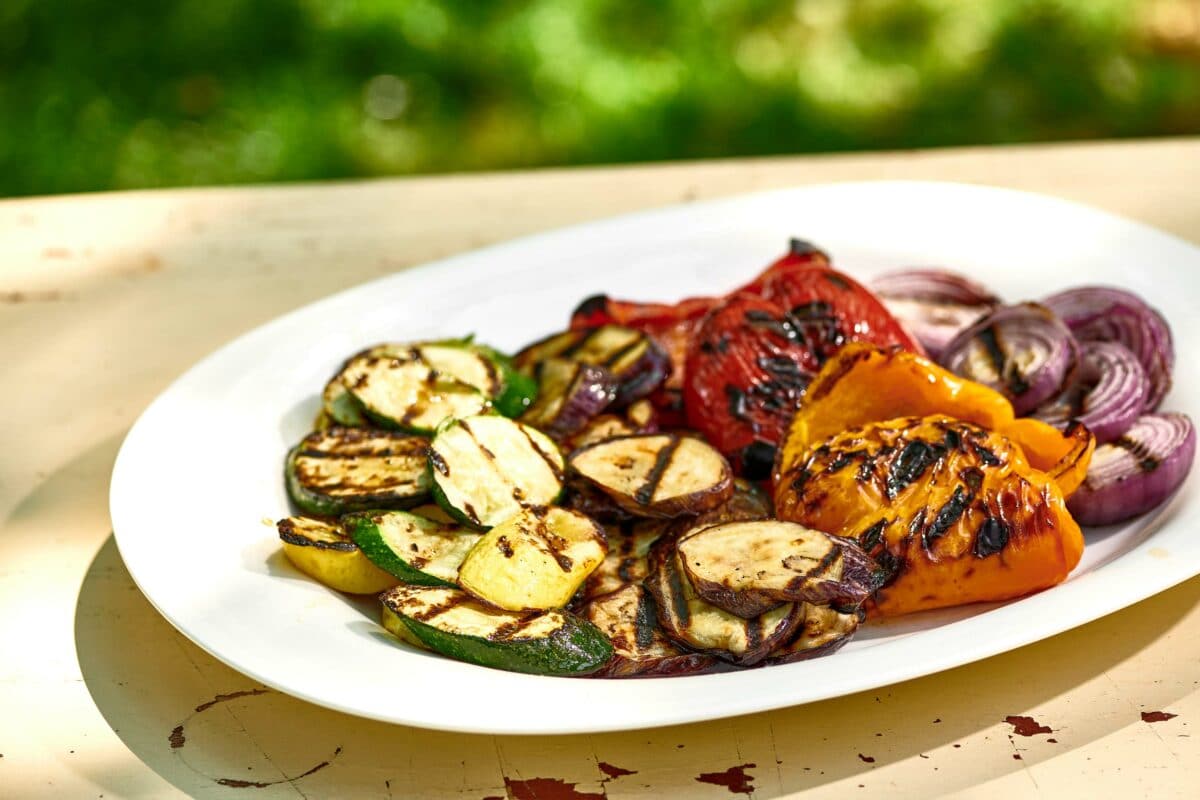
A beautiful platter of grilled vegetables is an amazing addition to any cookout. The jewel-like colors, the smoky flavors, the charry little edges. I can make a whole meal out of grilled vegetables and maybe one or two other sides, but they are perfect paired with Grilled Balsamic Skirt Steak, Grilled Swordfish, Grilled Chicken Breasts, and so much more. For a vegetarian meal, serve the veggies with Bulgur Wheat Salad.
You can also chop them up and use them to top grilled pizzas. Leftovers can be added to pasta to make a vegetarian pasta salad or a quinoa salad for another easy summer side dish later in the week.
By signing up, you agree to our Privacy Policy.
Grilling over direct high heat makes vegetables softer, sweeter, and silkier. There’s also something about grill marks on a pepper, onion, or slab of cauliflower or zucchini that makes us very, very excited to eat our vegetables.
And you can also opt for this step-by-step guide to making veggie skewers.
What's In This Post?
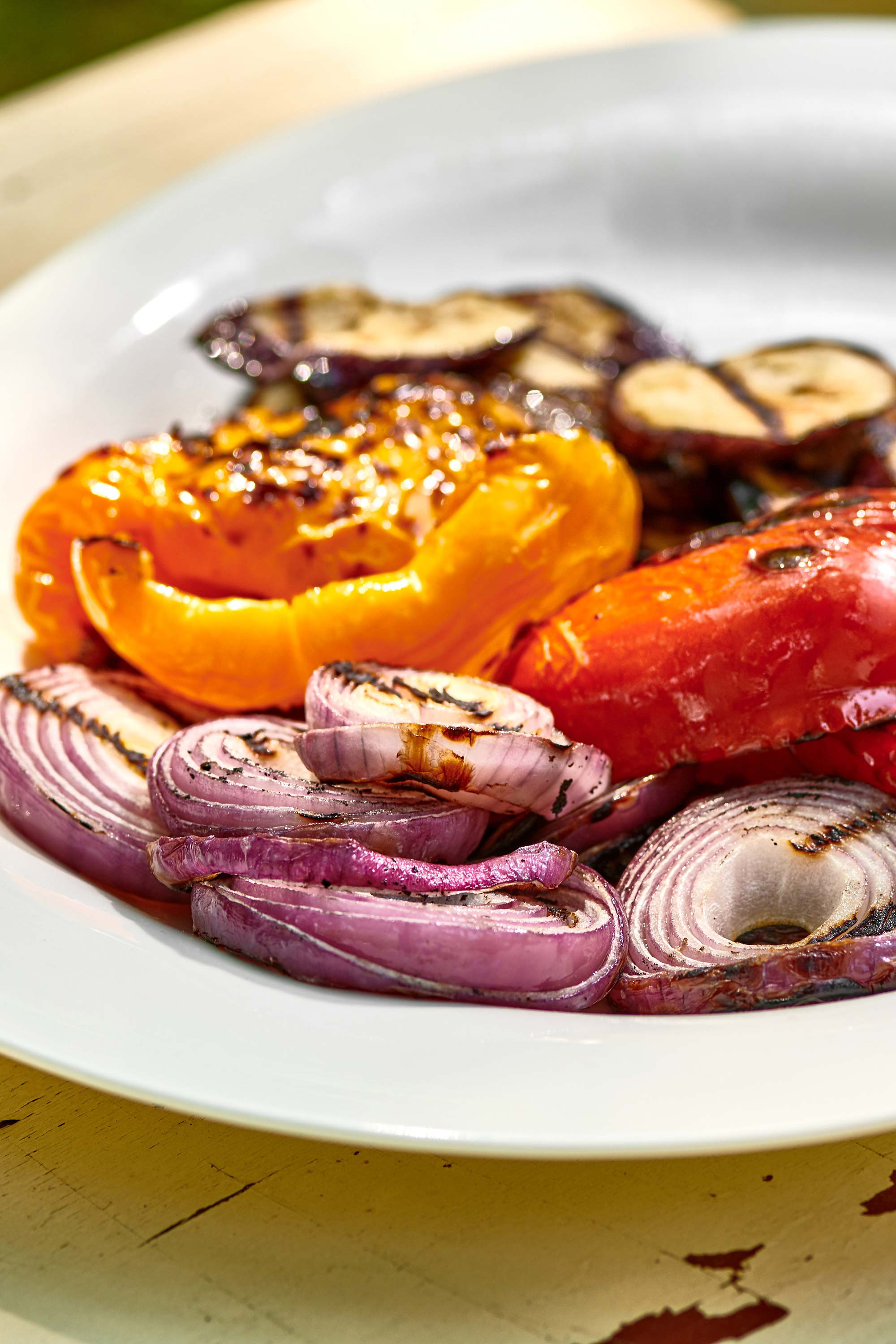
You can make a small sampling of grilled vegetables, or go all out for a multi-hued grilled vegetable platter. Olive oil and salt are all you need to make perfect grilled vegetables, or you can make a simple marinade, but that’s truly optional. You can also serve them with a dip or sauce of sorts to make the whole thing a bit more interactive and interesting. Try chimichurri or persillade drizzled over or served on the side.
Grilled Vegetables: There is something about grill marks on a pepper, onion, or slab of zucchini that makes us very, very excited to eat our vegetables.
Best Vegetables for Grilling
SO many vegetables are great on the grill. You can grill potatoes, corn, lettuces (radicchio, endive, romaine), cauliflower, broccoli, cabbage, eggplant, zucchini, summer squash, tomatoes, carrots, onions, peppers, brussels sprouts, and more.
You can grill smaller pieces of vegetables on kebabs or skewers, but larger pieces make for a dramatic presentation, and allow your guests to pick and choose the vegetables they like best. It also gives you flexibility in how you use the vegetables in other ways; you can cut them into smaller pieces later if you like.
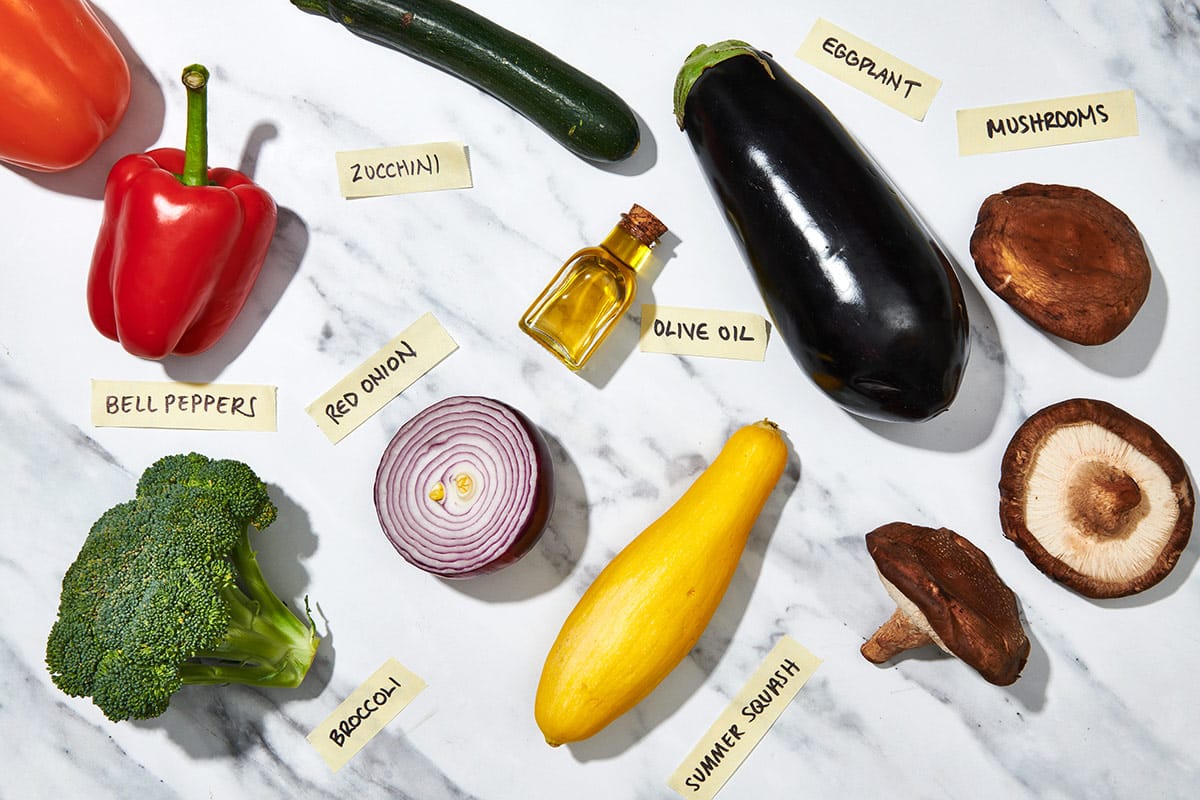
Tips
- Don’t raise the heat too high, or they can burn.
- Move the vegetables around to cooler areas of the grill if they seem to be browning too fast.
- Par-cook harder vegetables so that they cook evenly and don’t take longer than other softer vegetables (see below for instructions).
- Make sure the vegetables are nicely coated with oil; this will prevent them from drying out.
- Wooden (or bamboo) skewers need to be soaked for at least 30 minutes in water to cover before skewering the vegetables (or anything else); this prevents them from burning.
- For either wooden or metal skewers: If you can find skewers that are flat vs. round, they will help you turn the food on the grill more easily, without the food spinning around the skewer. Some foods are spinnier than others, and this you find out by experience.
- Use a grilling basket or rack for smaller pieces of vegetables to prevent them from falling through the grates.
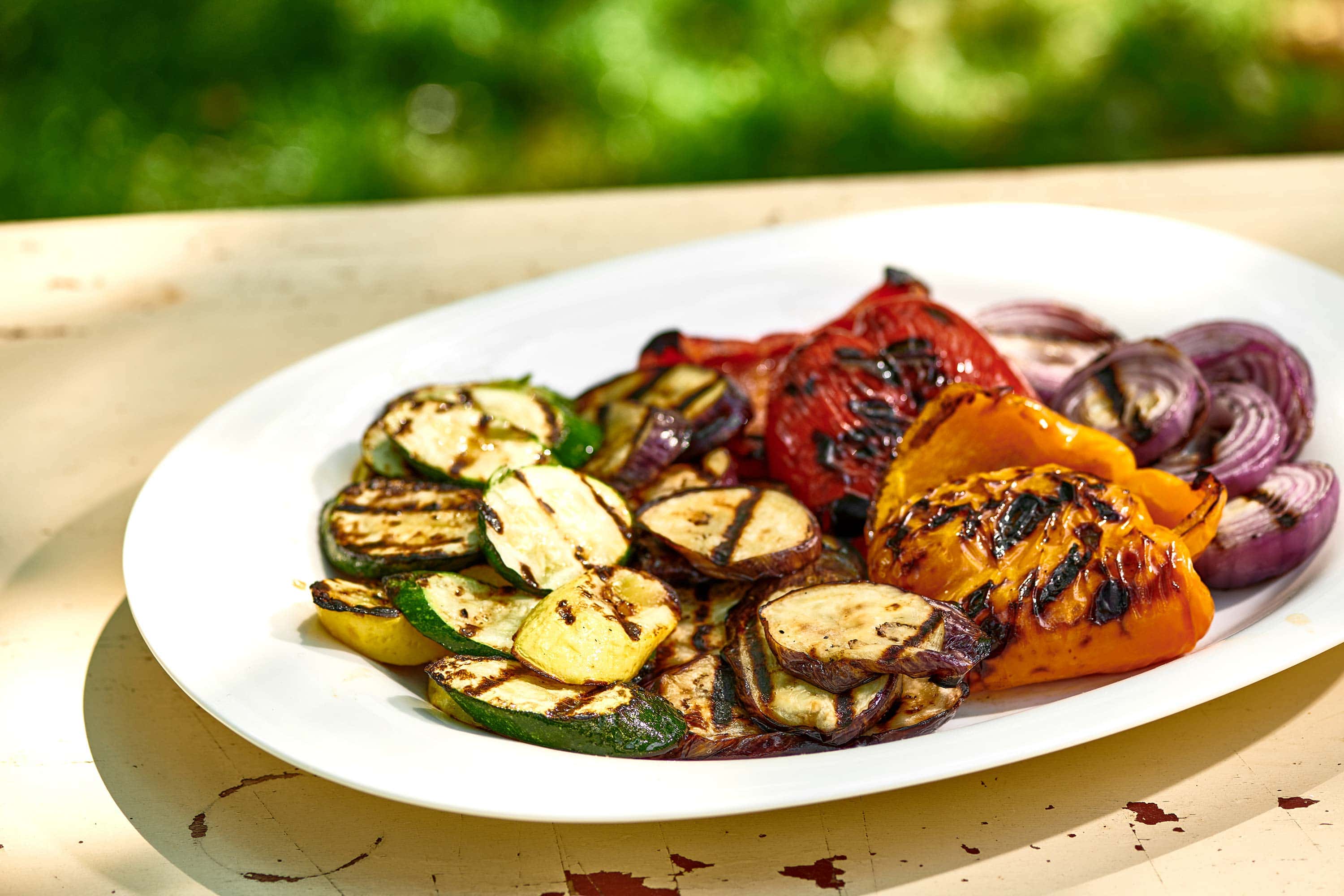
Grilling Harder Vegetables
If you are looking to grill more dense vegetables, like potatoes, cauliflower, broccoli, winter squash, and the like, it is usually smart to par-cook them before grilling them, meaning to cook them part way through. Because they are so hard, they will take a very long time to become tender on the grill, and consequently, you will find it a little too easy to char the outsides before the insides become soft.
Try steaming them until they are somewhat tender but still firm in the middle before skewering them and grilling them. Your other option is to cook them lower and slower over indirect heat on the grill, but that takes some time and attention.
Preparing the Vegetables
The short answer is that how to want to cut the vegetables is up to you. It’s easy to let the vegetables dictate their shapes. For instance, you might want to cut bell peppers into thick planks, or simply halve them lengthwise, and remove the membranes and seeds. Eggplant, zucchini, and summer squash can be sliced crosswise or lengthwise. Large tomatoes should be halved, or maybe quartered. Smaller veggies, like mushrooms or cherry tomatoes, or skinny vegetables, like asparagus, should be left whole. Again, think about a grill basket.
Approximate Vegetable Grilling Times
These are guidelines for the total times for grilling individual vegetables. Of course, much depends on the heat of your grill, the thickness of the vegetables, and the distance between the grates and the fire, but these are approximate total times for grilling vegetables directly over medium-high heat with about 4 inches between the food and the flame.
- Artichokes (after steaming): 8 minutes
- Asparagus: 4 to 8 minutes
- Okra: 8 to 10 minutes
- Green beans: 8 to 10 minutes
- Scallions: 4 to 6 minutes
- Corn (shucked): 8 to 10 minutes
- Eggplant (sliced): 7 to 10 minutes
- Onions (sliced): 10 to 12 minutes
- Mushrooms: 6 to 12 minutes (depends largely on size of mushroom)
- Peppers: 8 to 10 minutes
- Radicchio wedges: 6 to 8 minutes
- Endive (halved): 5 to 6 minutes
- Romaine: 4 to 6 minutes
- Tomatoes (halved): 4 to 6 minutes
- Zucchini and Summer Squash: 6 to 8 minutes
Marinating Vegetables
If you decide to just toss the vegetables with a bit of olive oil, and sprinkle them with kosher salt and pepper, you will have wonderful grilled vegetables with nothing standing in the way of the flavor. However, a delicate marinade can bump up the taste even more, and takes all of 3 minutes to pull together. You can marinate vegetables from 6 hours to 24 hours, with the flavor becoming slightly deeper over time.
Try this Lemon Garlic Marinade for your vegetables.
Using a Grill Basket
Instead of skewering or kebabbing smaller cut vegetables, you can prepare them as though they were going to be skewered, but then put the pieces into a grill basket.
Make sure they are not layered too deeply. You want them to cook quickly and evenly. While you don’t need only a single layer of vegetables in the basket or tray, you want to make sure everything has a chance to be at the bottom against the fire, so avoid piling them high.
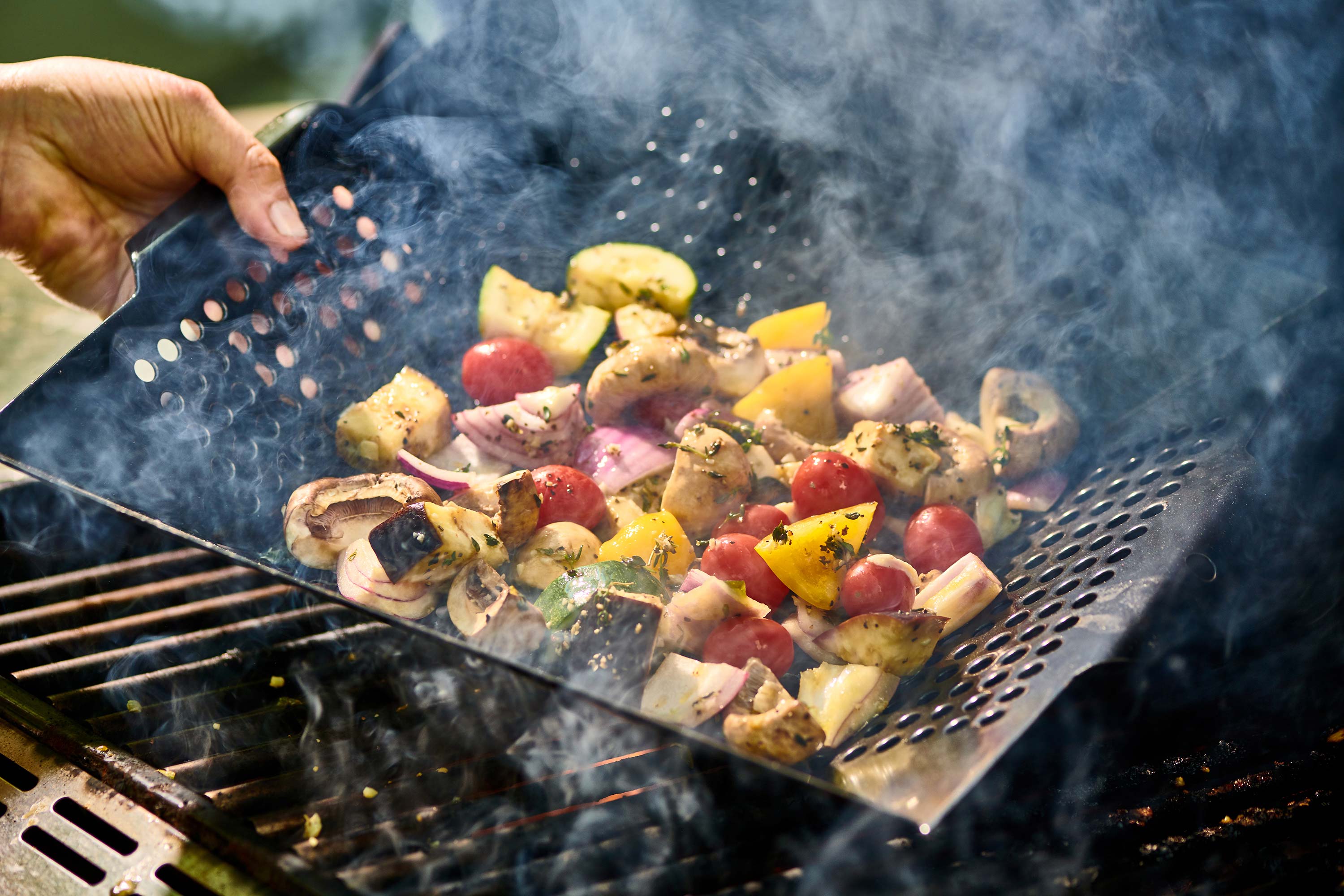
Toss them every few minutes as they grill, until they have some nice browned spots and are tender. This will take anywhere from 8 to 16 minutes, depending on how many vegetables are in the basket, how high the heat is, and how dense the vegetables are. As with kebabs, try and pick vegetables that will take the same approximate amount of time to cook.
How to Use Grilled Vegetables
Grilled vegetables can be used in any recipe or way that you might use roasted vegetables. Serve them as is or try the following!
- Drizzle grilled vegetables with good balsamic vinegar or truffle oil.
- Drizzle Creamy Avocado Dressing or Chermoula over the veggies.
- Use grilled vegetables on Grilled Bruschetta and crostini.
- Add them to salads, pastas, casseroles, grain salads, and other bowls.
- Layer them in sandwiches or on top of burgers, like a classic hamburger or a lamb burger.
- Include them in an antipasti platter.
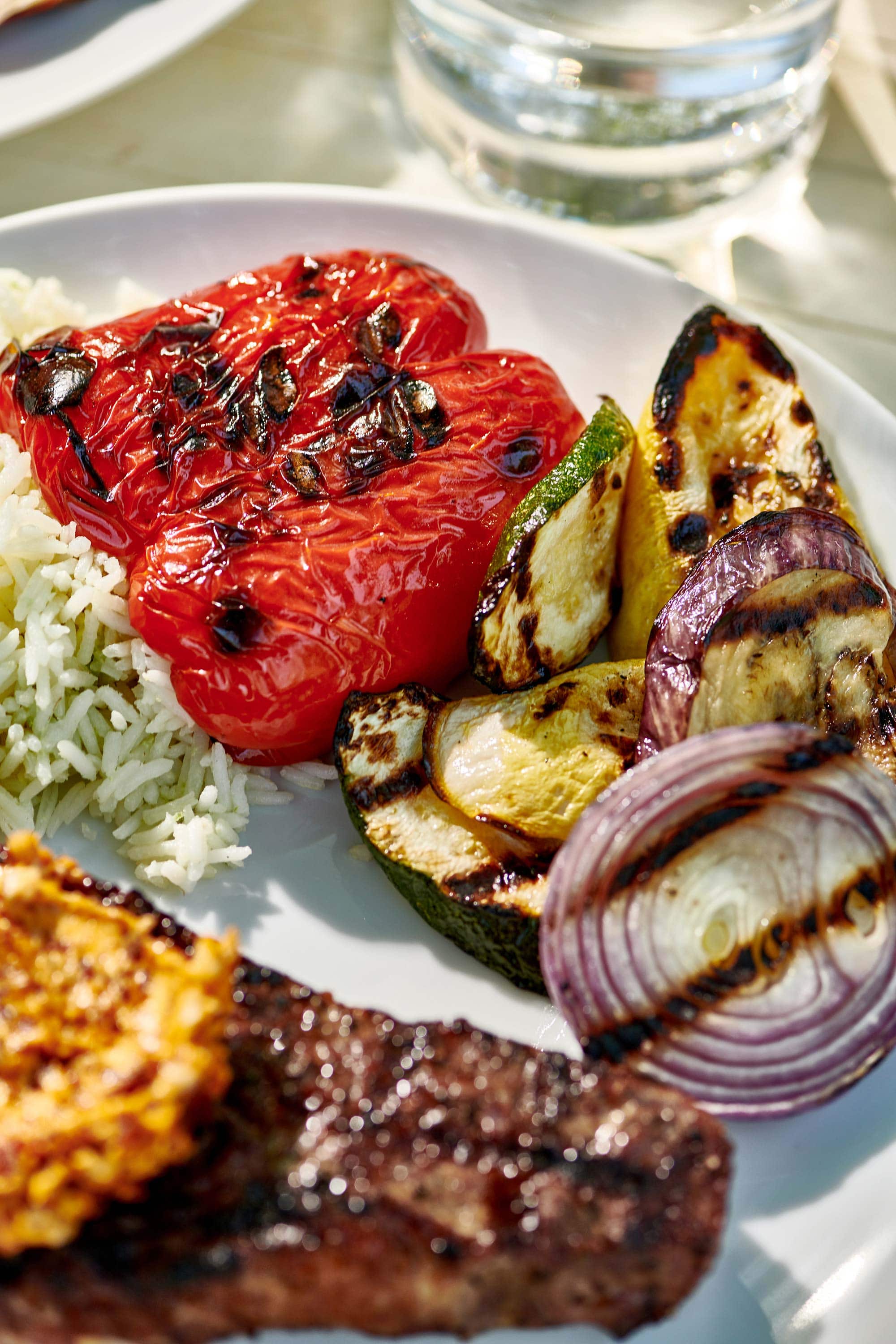
What to Serve With Grilled Vegetables
Pin this now to find it later
Pin It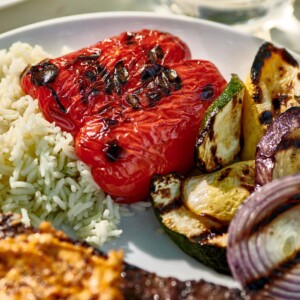
Grilled Vegetables
Equipment
Ingredients
- 1 pound assorted vegetables cut into ½-inch or so thick slices (such as red onions, bell peppers, zucchini, summer squash, whole cherry tomatoes, mushrooms, eggplant, or lightly cooked cauliflower or broccoli; see Note)
- Olive oil (for brushing the vegetables; about 1/4 cup)
- Kosher salt (to taste)
- freshly ground black pepper (to taste; optional)
Instructions
- Trim, clean, and cut the vegetables. For larger pieces, let the vegetables dictate their shapes. For instance, you might want to cut bell peppers into thick planks, or simply halve them lengthwise, and remove the membranes and seeds. Eggplant, zucchini, and summer squash can be sliced crosswise or lengthwise. Tomatoes should be halved. Smaller veggies, like mushrooms or cherry tomatoes, or skinny vegetables, like asparagus, should be left whole. Again think about a grill basket.
- Brush the vegetables on both sides with olive oil and sprinkle with salt and pepper, if desired.
- Heat the grill to medium-high. Grill the vegetables 4 inches from the heat source, turning them every few minutes, until the vegetables are tender and everything has a nice grill-marked exterior, anywhere from 8 to 15 minutes, depending on which vegetables you choose.
- Serve warm or at room temperature.
Notes
- Don’t raise the heat too high, or they can burn.
- Move the vegetables around to cooler areas of the grill if they seem to be browning too fast.
- Wooden (or bamboo) skewers need to be soaked for at least 30 minutes in enough water to cover before skewering the vegetables (or anything else); this prevents them from burning.
- For either wooden or metal skewers: If you can find skewers that are flat vs. round, they will help you turn the food on the grill more easily, without the food spinning around the skewer. Some foods are spinnier than others, and this you find out by experience.
- Use a grilling basket or rack for smaller pieces of vegetables to prevent them from falling through the grates.
- If you are looking to grill more dense vegetables, like potatoes, cauliflower, broccoli, winter squash, and the like, it is usually smart to par-cook them before grilling them, meaning to cook them part way through. Try steaming them until they are somewhat tender but still firm in the middle before skewering them and grilling them. Your other option is to cook them lower and slower over indirect heat on the grill, but that takes some time and attention.
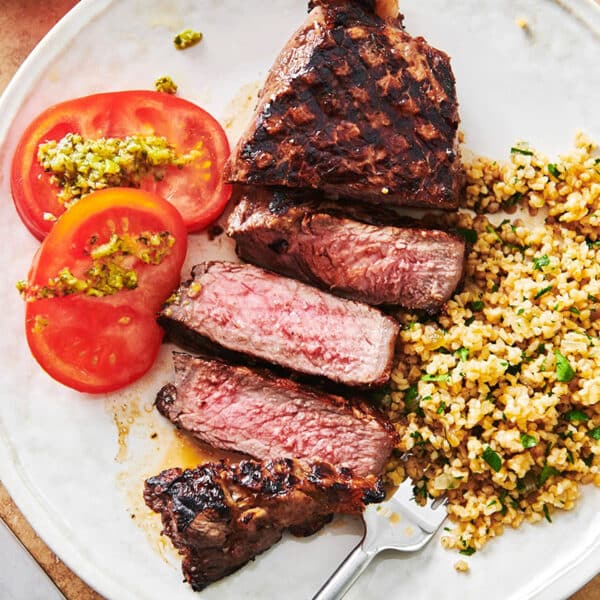
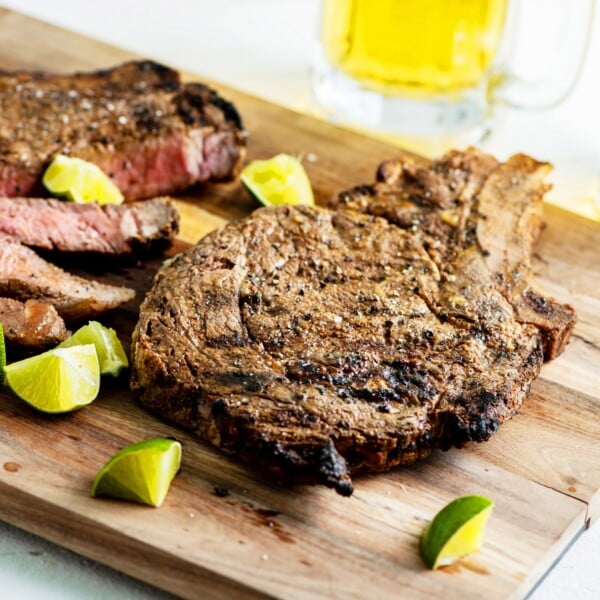
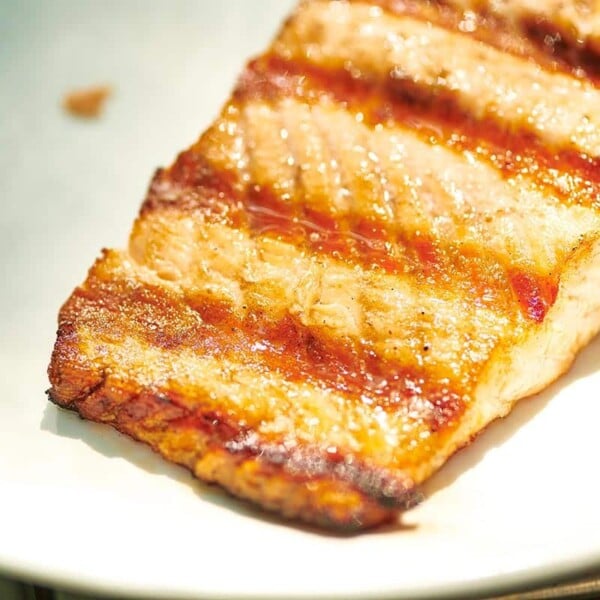
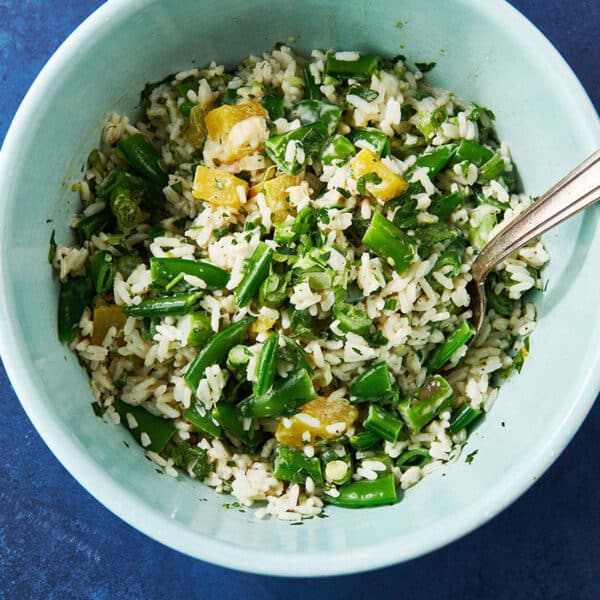
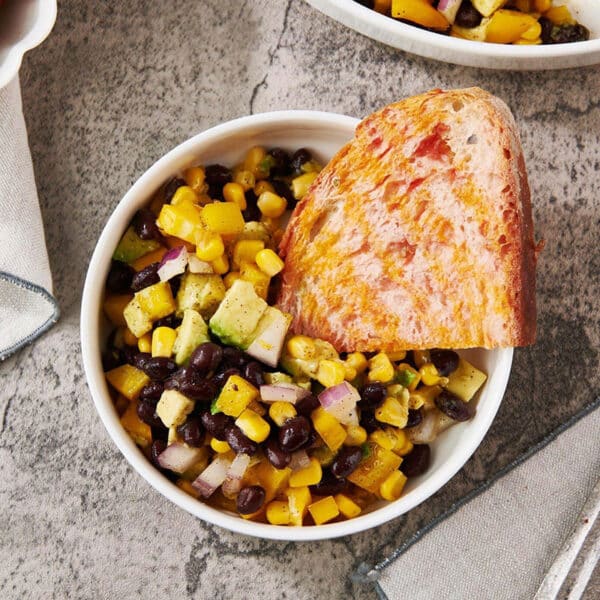
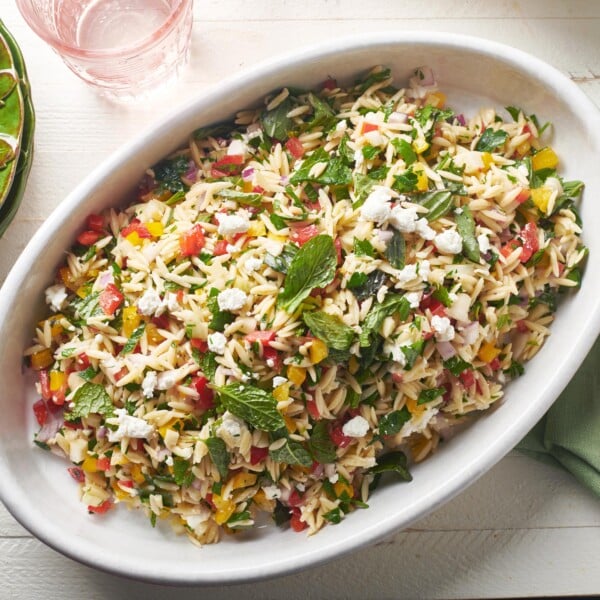










We had this for dinner tonight with our garden zucchini! Excited for all the grilled veggies to come